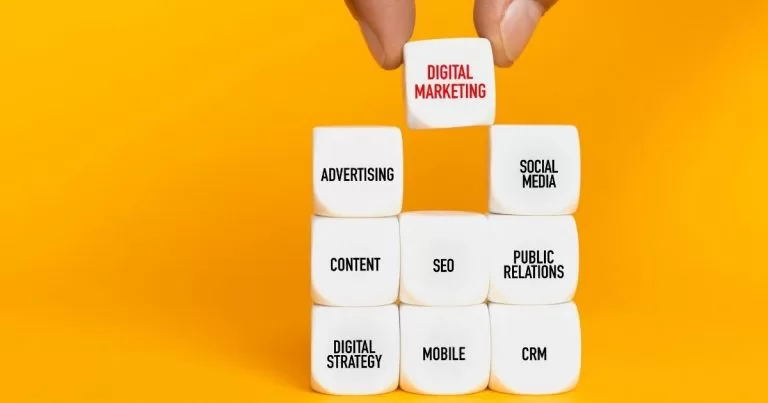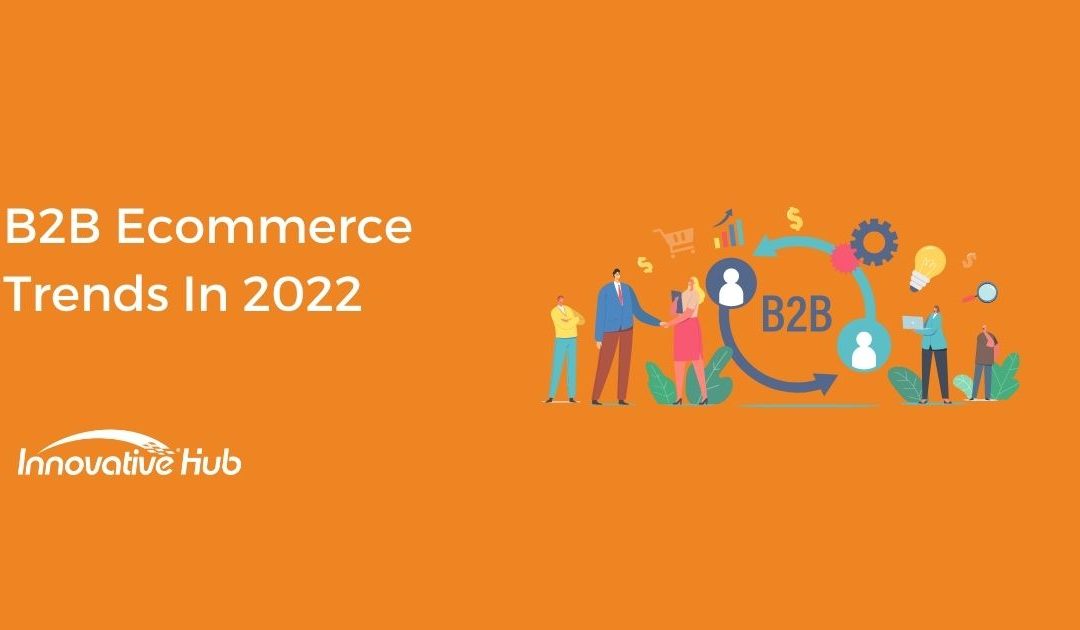As the ecommerce industry’s climate continues to experience major shifts due to the volatility of the global market, it is important for business owners to keep up with the latest B2B ecommerce trends to stay ahead of the curve. The pandemic has steered consumers to shop online, resulting in extensive growth in the ecommerce space. Although many businesses expect to build on last year’s momentum for continuous progress this year, they will need to be adaptable to prepare for rising inflation and other unforeseen circumstances.
In this post, we will discuss some of the upcoming trends for B2B ecommerce to help your business stay ahead of the industry and prepare strategies and plans that will move your businesses forward.
Ecommerce Takes Over
Many brick-and-mortar businesses that turned to ecommerce for survival have managed to recover considerably from woes stemming from the pandemic. It is widely expected for ecommerce to continue its rapid growth in 2022. This is the same for B2B ecommerce, as more B2B buyers continue to adopt purchasing online. This means that trade volumes are projected to increase as sellers strive to fulfill demands from all around the world.
Taking the positive projections into consideration, B2B sellers who are on the ball should start developing sales strategies to capitalise on the advantages. This includes optimising the available digital channels to generate more traffic and sales from potential buyers.
Online Accessibility and Digitalisation
The development of greater online accessibility and digitalisation has negated previous limitations of ecommerce and unlocked even more possibilities in terms of trading processes. B2B businesses are no longer bound by geographical limits, and have the ability to trade internationally through digital means.
For instance, trade discussions can now be conducted online with the use of innovative communication softwares. Trade documents can also be prepared and signed off virtually with the help of verified secure, digital tools. Most recently, the emergence of digital payment options have provided a fast, secure and reliable method to streamline the payment process for both buyers and sellers.

Digital & Social Media Marketing
Digital marketing has become relevant very quickly in recent years, and is now a mainstay in our daily lives. There are various forms of marketing strategies under the digital marketing umbrella, consisting of both producing organic content and paid advertising.
One of the most popular channels for digital marketing is through social media. In social media marketing, brands utilise social media platforms to develop digital presence, brand awareness and generate sales. This can be done by creating organic content on their brand pages, or running paid advertisements on the platforms to reach more viewers. The most popular social media platforms in Singapore include Meta (Facebook and Instagram), TikTok, Twitter, LinkedIn, and XiaoHongShu.
Social media marketing is easily accessible, highly scalable and does not require any cost to start. With social media marketing, brands of all sizes have the ability to establish themselves in the digital space.
Becoming More Visible (Search Engine Optimisation)
As more B2B businesses transition from wholesale distribution to digital sales, there is increased competition to be visible on search engines. On top of just being on the internet, businesses have to be visible to their target audience. Enter search engine marketing.
Search engine marketing, or marketing on the worldwide web, comes in many innovative forms. Paid marketing can run advertisements on search engines and websites, in the form of texts, images and videos. Organically, businesses can focus on search engine optimization (SEO) to improve their visibility online. A brand with strong SEO has the potential to rank high on search engines, meaning they could land on the first page of search results and increase visibility to their target audience. Furthermore, with consistently good SEO practices, brands can continue to gain more visibility for the long-term.
Omnichannel Selling Now A Preference
Another upcoming trend in 2022 is purchasers’ preference for omnichannel services. This means that customers want to have the luxury of being able to access your brand and products on the internet, through mobile devices and in physical stores anytime.
Although these preferences are more commonly seen with B2C consumers, there is an increasing demand from B2B buyers as well, who are still B2C consumers during their personal time. Therefore, on top of just having a digital store, B2B sellers looking to stay ahead will be wise to make their brands and products readily available physically, online and through mobile devices.

Live Streaming The Future Forward?
In recent times, live streaming has become a widely popular channel for businesses from many different sectors to sell their products. The key value of live streaming is its ability to connect brands and customers to have real-time, meaningful and more intimate engagements. Engaging live streams are able to replicate a shopper’s experience similar to shopping in-person, making the experience more lifelike than just with online shopping. Short of being able to touch and feel the product, customers will be able to view actual products from different angles, and ask live streaming hosts questions about the products in real-time.
Live streaming can be done on a host of digital and social media platforms, such as Youtube, Facebook, Twitch and Instagram. Amazingly, this function is also available on e-commerce sites, such as Lazada, a B2C platform, and Alibaba.com, a B2B platform. For instance, Alibaba.com recently found success with a #SuperSeptember sales campaign done via live streaming.
With the immense popularity and success of live streaming, B2B sellers can utilise this method to showcase their products and highlight the products’ key value propositions to potential buyers. Brands can explore engaging influencers to host their live streaming events and tap on the influencers’ following to drive more viewership for the events.
Emerging D2C Channel
While the pandemic has impacted many businesses’ ability for their products to reach consumers through reliable distributors, some companies have responded by setting up direct-to-consumer (D2C) channels, essentially removing the need for distributors in their supply chain. As an example, D2C revenue in the states increased by almost half back in 2020 alone. Most recently, global brands like Nike, which focused on utilising distributors in the past, joined the D2C bandwagon, launching the ‘Nike SNKRS’ application to sell directly to consumers.
With the increasing adoption of D2C channels, brand owners will be wise to include D2C as a part of your sales channels to stay ahead, or keep up with the competition. On the other hand, B2B distributors, wholesalers and resellers will have to demonstrate to brands that their services add value to their B2B customers, and brands should continue working with them.
Data Is King
More businesses are using data to assess many aspects of their business, from analysing purchasing behaviours, to generating sales forecasts. Data is widely recognised as sources of facts and is quantifiable, making it ideal for businesses to analyse their performance and develop strategies to improve productivity.
Businesses who are already using interactive digital tools, such as enterprise resource planning software, and even free digital tools provided by B2B marketplaces, can tap on available data to study their consumers’ behaviors, predict periods of high and low demand, forecast revenue, and revise processes to move their businesses forward.
Conclusion
For some time, the B2B industry had to introduce temporary measures to adapt to the pandemic. Face-to-face trade shows had to be done virtually, and physical showrooms were replaced with digital storefronts. Such changes soon became permanent, as more sellers and buyers started to appreciate the convenience and accessibility of B2B trade digitally. Being able to sell online provided significant relief for B2B sellers during the pandemic.
Expectedly, this method will continue to present more opportunities for B2B buyers to make purchases through digital channels. Staying on top of the latest B2B ecommerce trends can help sellers put themselves in favorable positions to greatly benefit from these opportunities. For example, with trending digitalisation of the B2B industry, businesses can register on top B2B marketplaces like Alibaba.com to enable buyers to carry out their shopping and purchasing processes seamlessly.
Find out more on how you can mark your business on the global map by becoming a part of the world’s largest B2B online marketplace platforms here!

